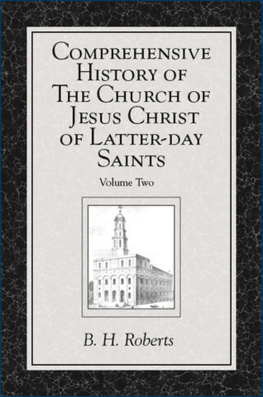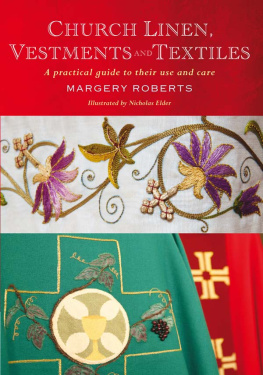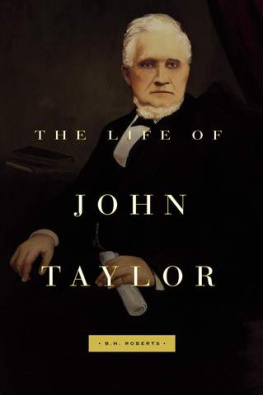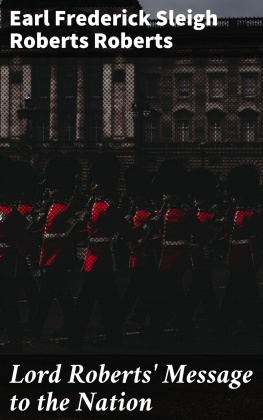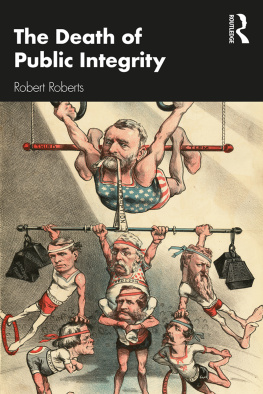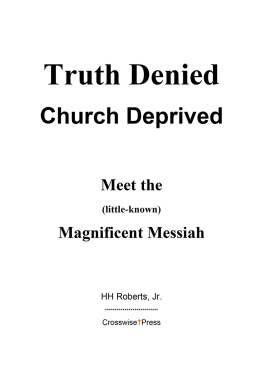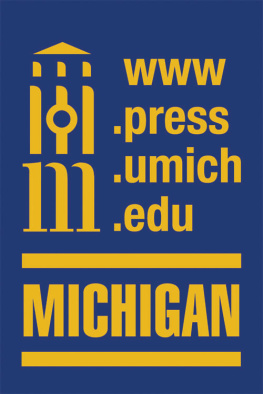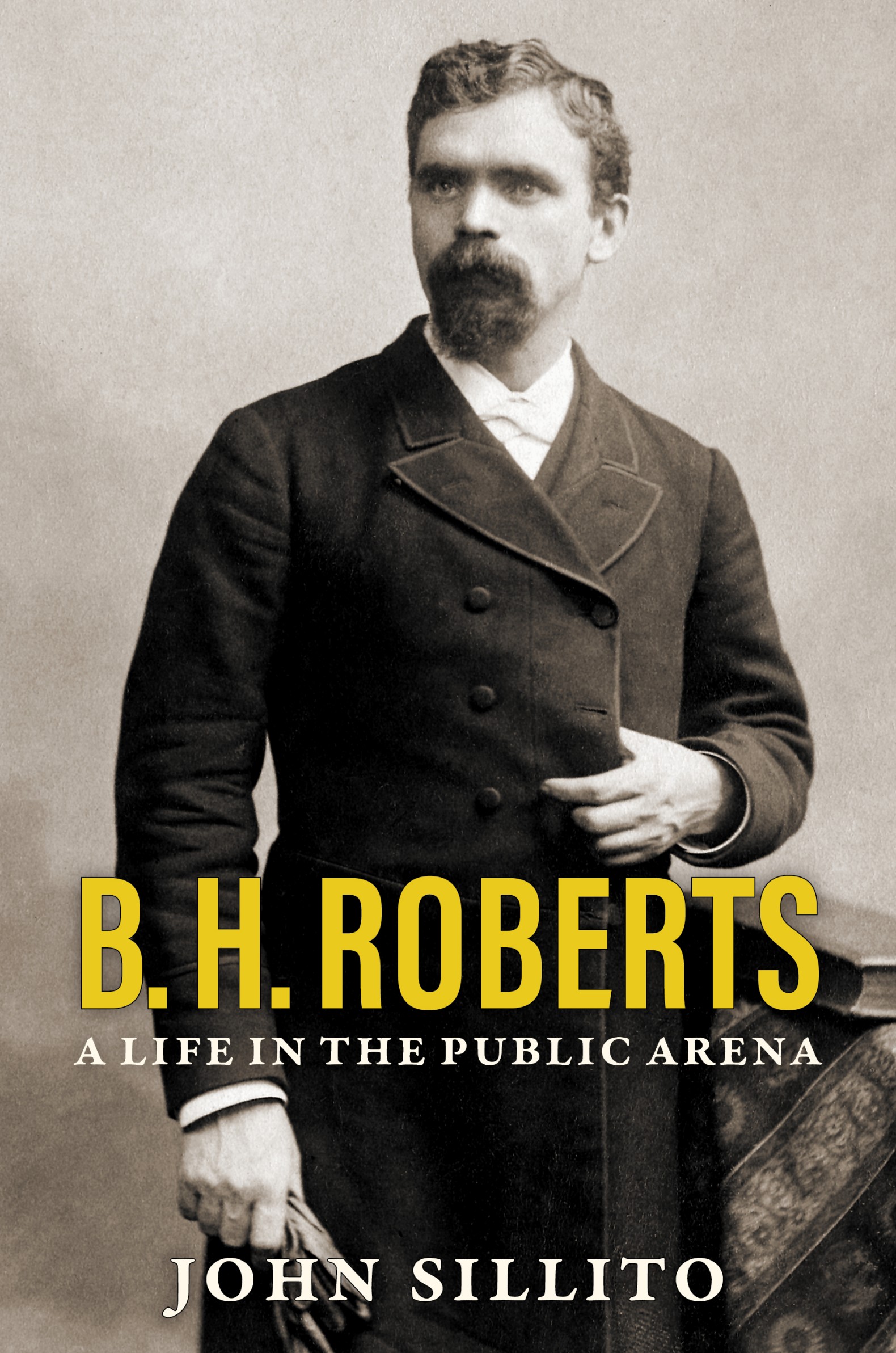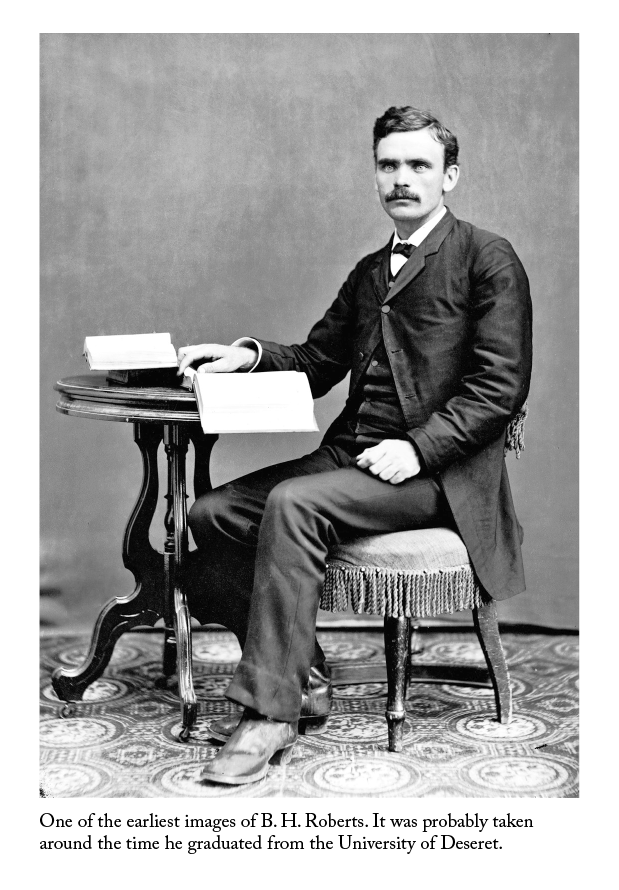B . H . Robe r t s
A Life in the Public Arena
John Sillito
Signature Books | 2021 | Salt Lake City
For Richard C. Roberts, 19322017,
good friend, valued colleague, and my link to the man himself
2021 Signature Books Publishing, LLC. All rights reserved. www.signaturebooks.com. Signature Books is a registered trademark of Signature Books Publishing, LLC. Printed domestically on paper certified by the Sustainable Forestry Initiative.
The opinions expressed in this book are not necessarily those of the publisher. Photos courtesy of the author, except as noted.
Jacket design by Jason Francis
First edition | 2021
library of congress cataloging-in-publication data
Names: Sillito, John R., author.
Title: B. H. Roberts : a life in the public arena / John Sillito.
Description: First edition. | Salt Lake City : Signature Books, 2021. | Includes bibliographical references and index. | Summary: Without question, Mormonisms most influential scholar was during the first half of the twentieth century was B. H. Roberts (18571933), historian, theologian, public intellectual, and member of the First Council of Seventy of the Church of Jesus Christ of Latter-day Saints. Outside of his official church duties and his passion for research and writing, Roberts was an active figure in partisan politics, having run for Congress twice, elected once, but due to opposition from both political parties over polygamy, was never seated. This biography by prize-winning historian John Sillito, the fullest and most scholarly assessment to date of the controversial church leader, examines Robertss entire life, with particular attention to the public figure who remains influential, even today. Born in England to LDS convert parents, Roberts served as a missionary and several years after his call as a general authority, at age sixty began serving as a chaplain during World War I. From 192227 he presided over the churchs Eastern States Mission. Although a hero to many even today for his scholarly outputa feat still rare among those called to church leadershipmodern assessments recognize antiquated views on race and womens suffrage. Yet Roberts remains a deeply compelling figure worthy of study Provided by publisher.
Identifiers: LCCN 2021023419 (print) | LCCN 2021023420 (ebook) | ISBN 9781560852940 (hardback) | ISBN 9781560854005 (ebook)
Subjects: LCSH: Roberts, B. H. (Brigham Henry), 18571933. | Mormon scholarsBiography. | Religion historiansUnited StatesBiography. | PoliticiansUtahBiography. | LCGFT: Biographies.
Classification: LCC BX8695.R58 S55 2021 (print) | LCC BX8695.R58 (ebook) |
DDC 289.3092 [B]dc23
LC record available at https://lccn.loc.gov/2021023419
LC ebook record available at https://lccn.loc.gov/2021023420
Introduction
It has been more than eighty years since Brigham Henry Roberts dieda period longer than his time on earth. During his adult lifetime, and since, Roberts was regarded by many as Mormonisms preeminent public intellectual. He was one of the LDS Churchs seven presidents of the Seventy, and a prolific author of polemics, histories, biographies, and even fiction. His best known worksthe two multi-volume studies, History of the Church of Jesus Christ of Latter-day Saints and Comprehensive History of the Church along with his other histories, are still quoted by general readers and scholars alike, despite the more professional New Mormon History which has emerged in the last forty years. He produced hundreds of articles in newspapers and journals, and many more sermons and talksexhorting the faithful from the pulpit of the Salt Lake Tabernacle as well as in LDS wards and stakes in this country and abroad.
Roberts embraced plural marriage; he married three women and spent a term in the Utah territorial prison because of his commitment. Compelling evidence suggests that his third marriage occurred after the Woodruff Manifesto despite his and his third wifes claim that it had taken place in spring 1890. Roberts struggled with accepting Woodruffs 1890 pronouncement, thinking it shortchanged his own commitment and that of others to the Principle. While he would come to make his peace with that change, he maintained his decisions even to the point of personal sacrifice.
Simultaneously, he was active as a political figure, helping to build the Sagebrush Democracythe nineteenth-century term for Utahs Democratic Party. Roberts served in the states constitutional convention, campaigned for Congress twice, was elected once, and then was denied the seat he won because of his practice of plural marriage. As a partisan political figure, he made both friends and enemiesespecially early on when he opposed adding a provision for woman suffrage into the Utah constitution. And even though his expulsion from Congress in effect ended his political career, at least as a candidate, Roberts always maintained an active interest in politics generally, and the Democratic Party specifically. As an Elder Statesman, his voice was heard in party councils and on the hustings in support of various candidates. For example, at the 1916 Utah Democratic convention, his support played a major role in the 1916 nomination of Simon Bamberger, Utahs firstand so far onlyJewish governor
When he was at the height of his powers, Roberts may have been the best-known and most recognizable Mormon figure both within the church and throughout the nation, partly due to the notoriety he gained in the national campaign to deny him a seat in Congress. Roberts is also considered by many to be among the handful of significant intellectuals produced by Mormonism. Clearly, he was one of the most important thinkers of Mormonisms second generationthose who matured in the Utah period. Noted historian Leonard J. Arrington called Roberts the intellectual leader of the Mormon people in the era of Mormonisms finest intellectual attainment. This was not Robertss finest hour as a religious or a political thinker.
Over the past thirty years, there has been an outpouring of scholarship on Roberts, including significant collections of his writings such as The Essential B. H. Roberts , edited by Brigham D. Madsen, (in two different editions), continues to attract the attention of those interested in theology. References to Roberts still grace the pages of scholarly Mormon publications, as well as in papers delivered at sessions of the Sunstone Symposium, the Mormon History Association, and other forums.
A number of valuable biographical studies have been produced about Roberts, including those by Truman Madsen,
While all of these studies were useful to me, I quote the most from Truman Madsens biography. His book, while lacking complete footnotes and at times exhibiting a defensive tone, is one that any serious scholar of Roberts needs to read. Although he does not always indicate where some of his primary sources may be found, Madsen had access to people and documents that others, including me, did not. Moreover, as Madsen researched, he spoke at LDS firesides on Roberts and occasionally attracted former missionaries from the Eastern States who had served under Roberts, which in turn led to more interviews, sources, and information for the book. His papers, held privately by his family, were unavailable as I researched my own book, but hopefully someday scholars will have access and can sort through the details. In short, I trust readers will understand that I do not quote Madsen uncritically, nor am I unaware of his books shortcomings, but where he offers details that are not found elsewhere, I believe it is important to include them.




